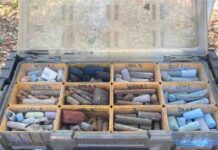Picasso and pastels? Well yes, as it turns out. Although it’s not a medium we usually associate with him, Pablo Picasso (25 October 1881 – 8 April 1973) did use soft pastels occasionally. You’ll find a few scattered around in different museums. I’ve chosen two to show you. They’re done 18 years apart and reveal how his pastel application changed.
I came across the first of these when I started researching this topic. Another version of it turned up in an Apollo article that mentioned a Picasso pastel going to auction. That pastel is similar to the one I show here but it’s stripped of all background context with only the two nude figures standing together. The woman embraces the man, seeming to comfort him. Rather than returning her embrace, the man has one arm tucked between their bodies while the other hand rests on the woman’s left shoulder. Both have their heads bowed toward the other.
As you can see, except for the background, this description also fits the large pastel found at the Musée de l’Orangerie.
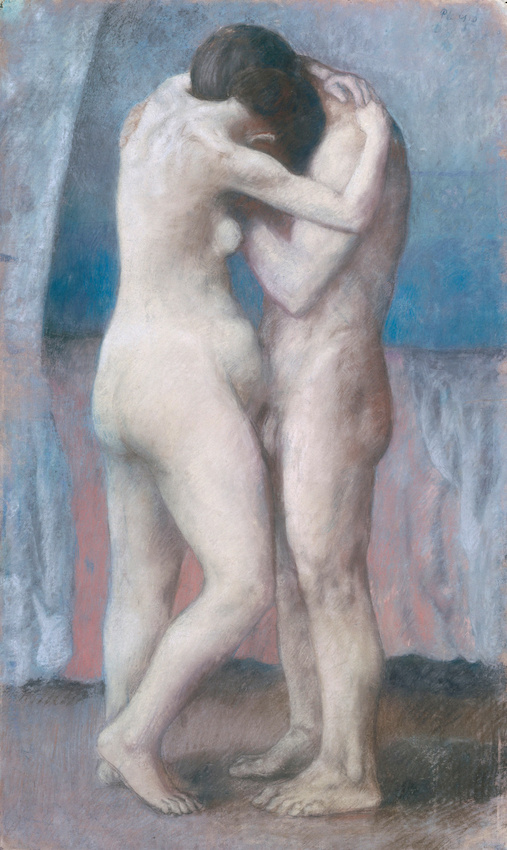
This piece appears to be a mix of blended and linear marks.
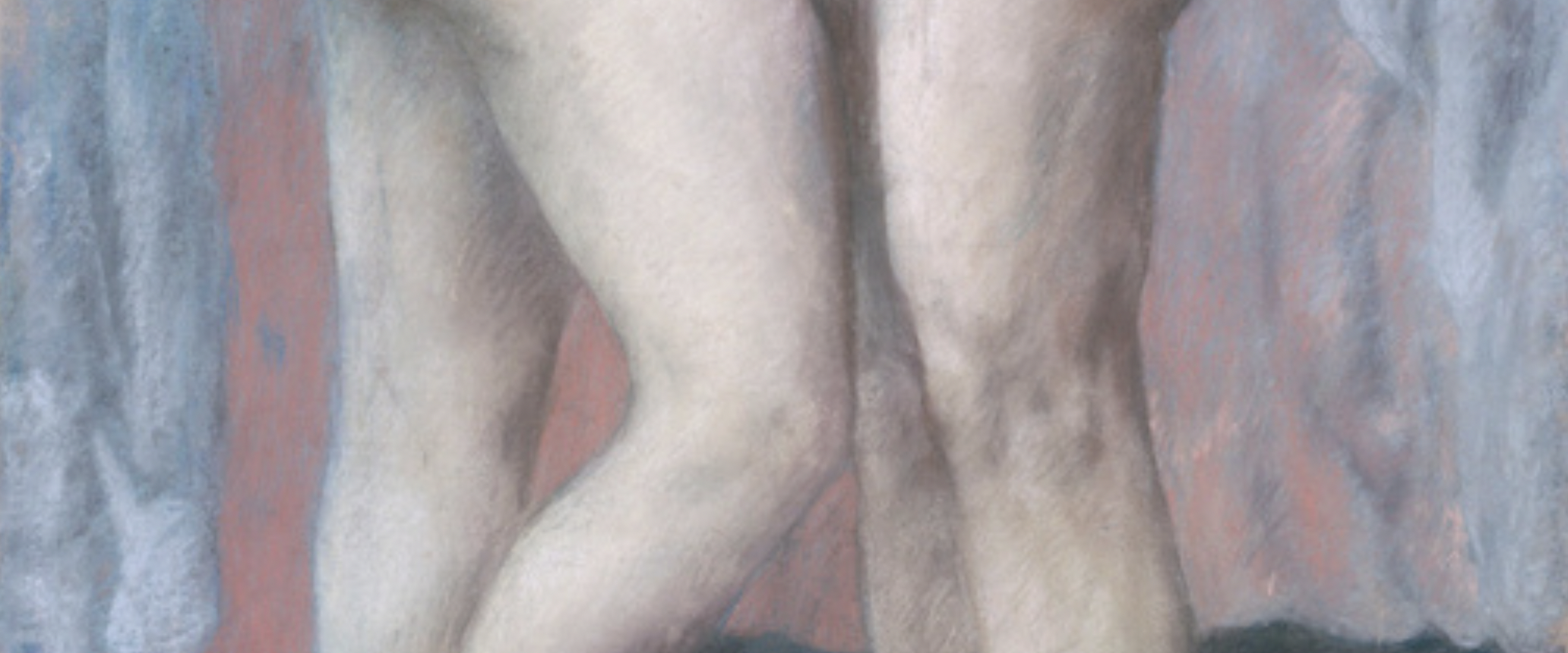
There’s a tenderness here and don’t we long to know what story it tells? What’s your take on what’s revealed to us here?
Although created during Picasso’s Blue Period (1901-1904), the limited palette is brighter, warmer, and more high-key than the pieces we can conjure in our mind’s eye from this time. These sketches were among the preparatory works he did for his well-known Blue Period oil painting, La Vie, now in the Cleveland Museum of Art. You can see another study along the same lines at the Musée Picasso Paris.
18 years later, Picasso did this next piece as a study for the large painting, Three Women at the Spring.
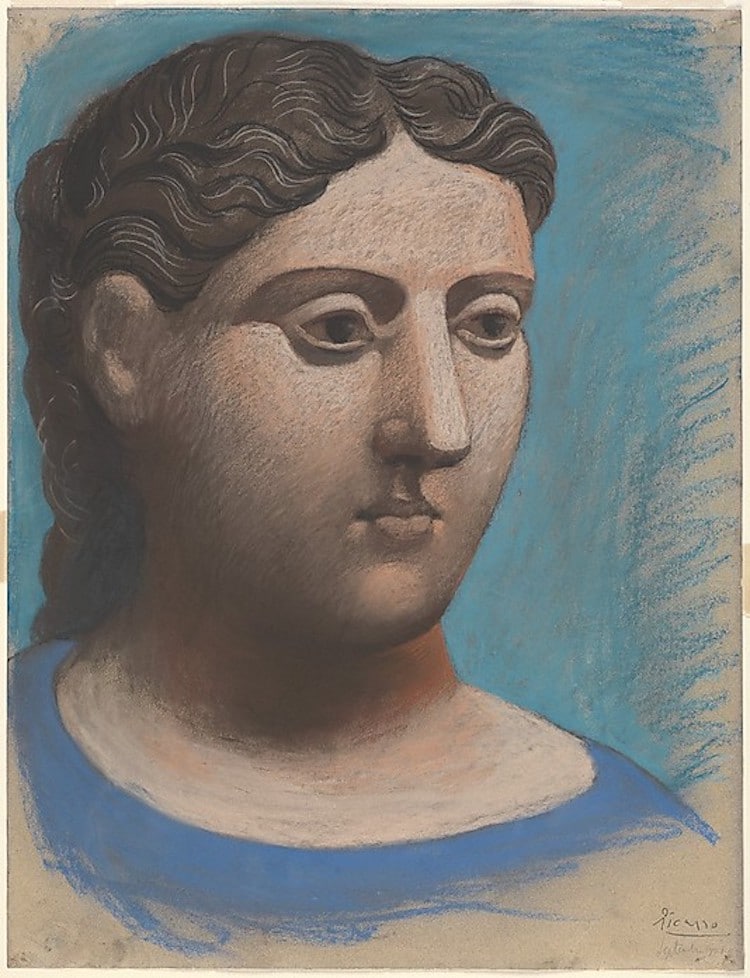
It’s clear how different this piece is from the pastel we saw above. The application of pastel is firm and dense. And of course, Picasso’s style has changed. (By now, Picasso was into his Neoclassical phase having moved through his Rose Period, Primitivism, and Cubism.)
Although the study is done in a similar colour palette to the earlier pastel, it’s very different from the final painting with its browns and greys.
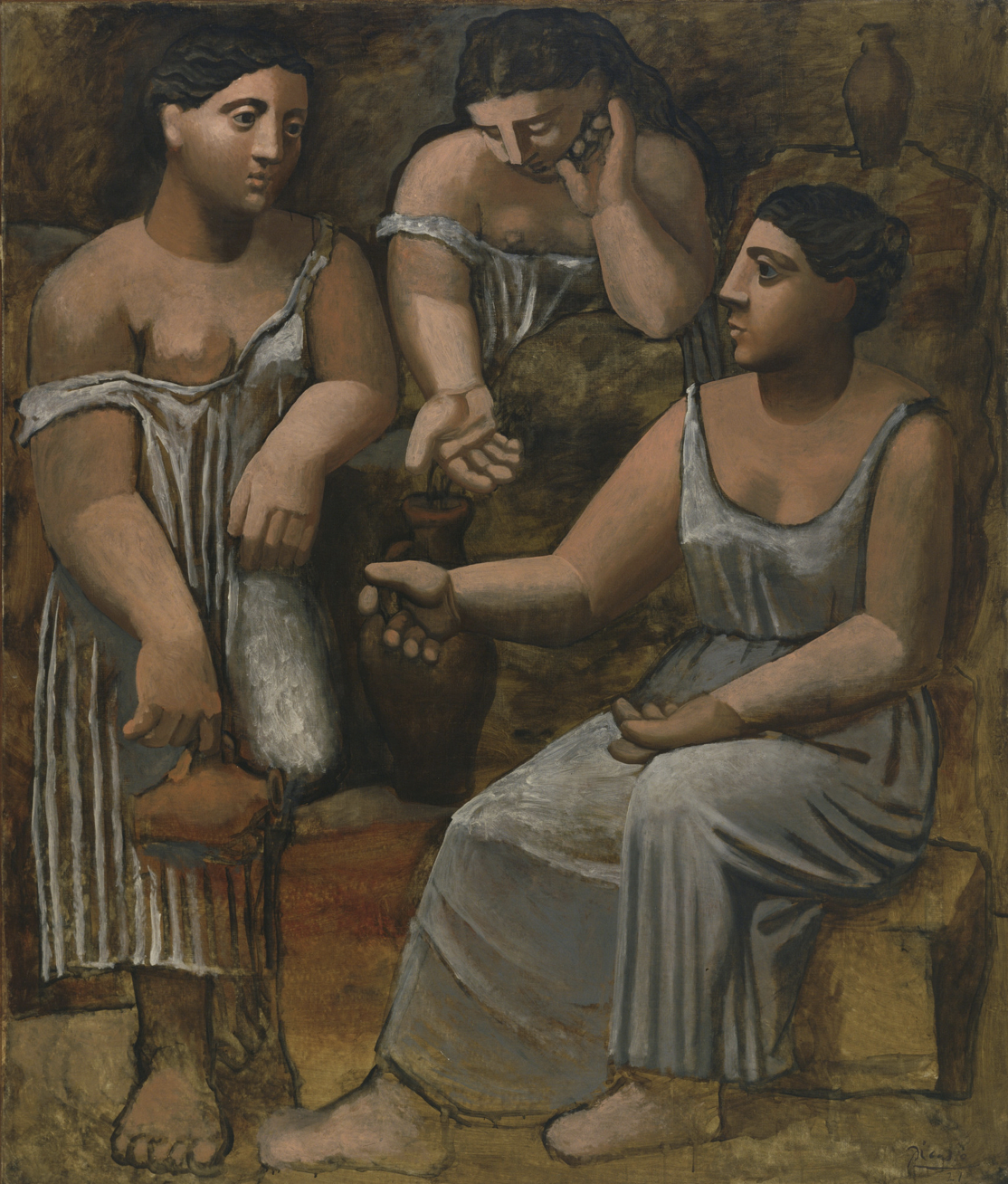
Were you surprised to learn that Picasso used soft pastels? Click here to see a beautiful painting of his mother in the Museum in Barcelona.
________________________________________________________________________
And the LPAPA PleinAir Magazine Award goes to…..
…. Aaron Schuerr for his painting Keyhole Panorama!
Aaron was one of 30 top plein air artists attending the 24th Annual Laguna Beach Plein Air Painting Invitational, a nine-day event in early October. Happily, the weather cooperated and artists were able to paint in glorious temperatures.
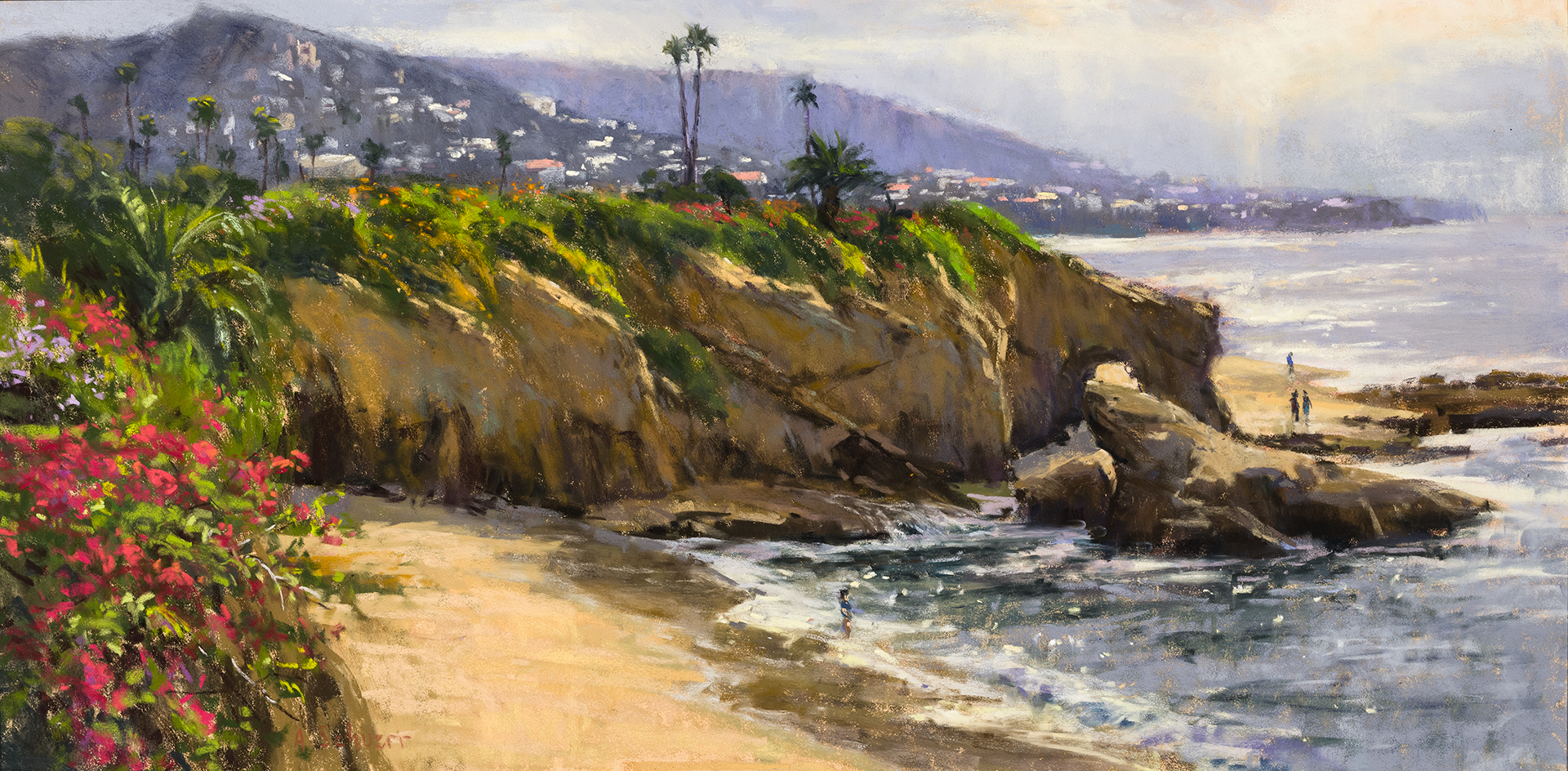
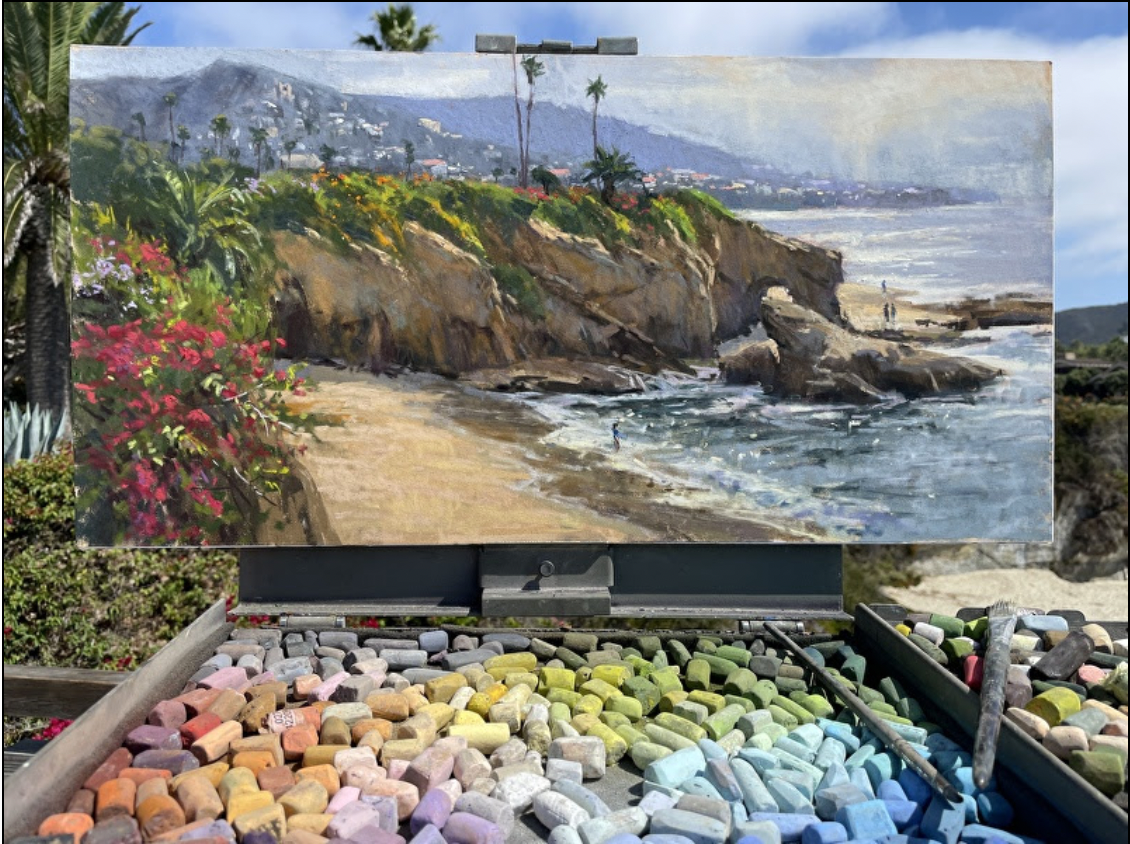
You can see all the work by all the participating artists in a flipbook here.
And that’s it for this time,
Gail


